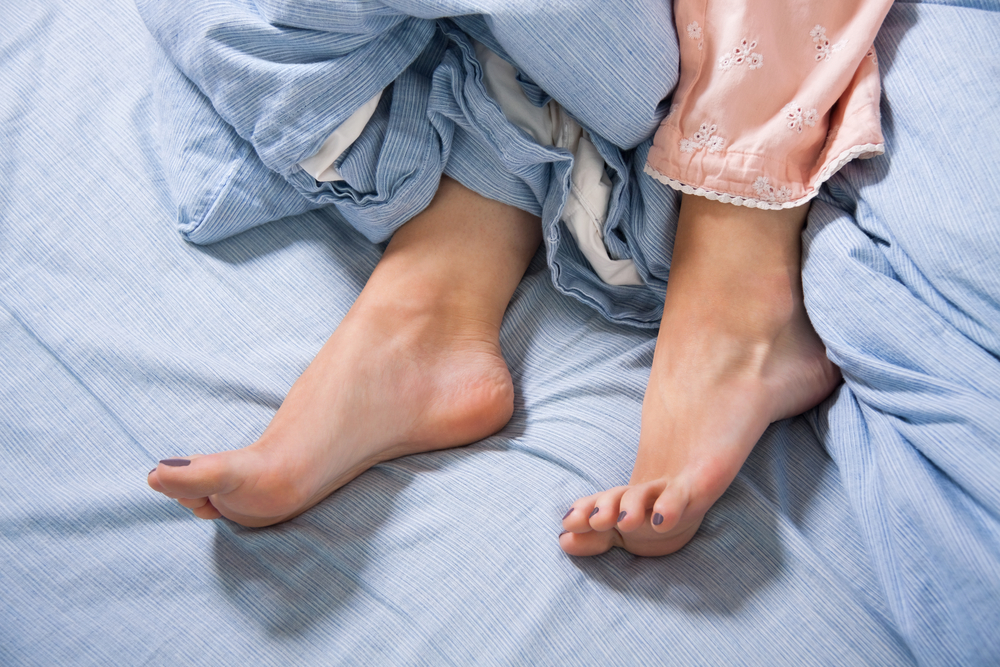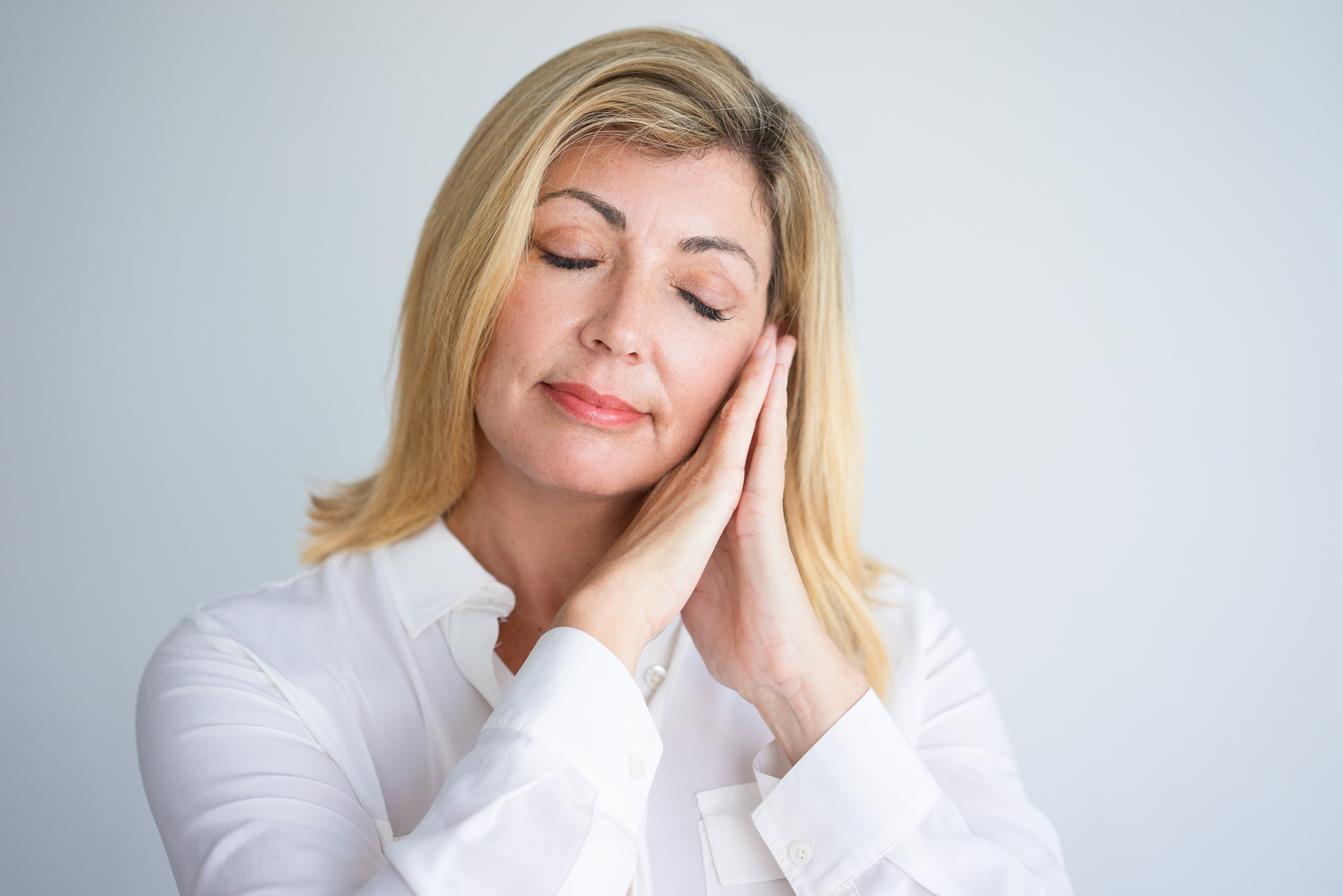Our bodies have some interesting sensations from time to time, and sometimes we don’t know why. Restless leg syndrome (RLS) is one of those perplexing conditions that leaves patients, and their doctors, with some unanswered questions. When patients come to me saying their legs have the “creepy crawlies,” and a persistent tingling that makes them want to move around, I know this struggle has a tremendous impact on their lives. They have difficulty sitting still, relaxing, and even sleeping.
Conventional medicine has not had much success helping people with RLS and the associated periodic limb movements in sleep (PLMS). There are new prescription medications available, but they come with many unwanted side effects. We don’t really know why RLS is reported twice as often in women than men, or what the pathophysiology is, but we do know we can help using a natural approach. Let’s take a look at RLS and some natural ways to address this mysterious condition.
What exactly is restless legs syndrome?
The symptoms of RLS can be overwhelming. It is described as an electric-current sensation flowing through the legs, and even sometimes the arms, tugging from the inside, necessitating movement for immediate relief. It is especially prevalent at night, causing sleep loss for both the sufferer and her partner. Patients experience unusual sensations that perpetuate tossing and turning, a need to move around, get out of bed, and rub their legs. The symptoms often increase while at rest. Diagnostic criteria for RLS is as follows:
- A pins and needles sensation urging you to move your legs
- Symptoms are worse at night
- Symptoms come on or increase with rest
- Movement provides immediate relief
But RLS has another symptom for many patients – sleep disturbance. Because of this, RLS is actually classified as a sleep disorder, requiring patients to seek treatment. There is a noticeable pattern of movement in a majority of cases – repetitive leg movement every 30 seconds or so, lasting one to three seconds, referred to as periodic limb movements in sleep. The movements may be severe enough to wake someone up. Others may be unaware of this activity, but wake up tired and wonder why. PLMS is usually diagnosed through a sleep study, which will confirm this activity.
Types of RLS
There are two main types of restless legs syndrome: primary RLS and secondary RLS. Studies suggest that anywhere from one in four to one in 20 people suffer from RLS symptoms. Both forms are linked to low levels of dopamine, a hormonal neurotransmitter. Dopamine is an important messenger in the brain helping to regulate much of our body’s functioning, including thinking, behavior, mood, and especially in the case of RLS – sleep and movement. Low levels of dopamine can trigger the urge to move our limbs, as found in RLS. But an extreme inadequacy of this hormone can cause tremors and the severe movements associated with Parkinson’s disease.
We know that primary RLS has a genetic component stemming from a malfunction in the way dopamine is metabolized in both the brain and the body. Secondary RLS may be caused by faulty iron metabolism, since iron is part of the chain in dopamine production.
Who is at risk for RLS?
- Individuals with a family history of primary RLS
- Individuals with iron deficiency anemia
- Individuals with end-stage kidney disease or hemodialysis
- Pregnant women
- Frequent blood donors
- Those who have undergone gastric surgery.
- Children with ADHD
RLS and sleep
My patients with restless legs syndrome complain most about their lack of sleep. One in four people diagnosed with RLS experiences sleep disturbance, and 80 percent experience PLMS. They are in seemingly constant movement – kicking, jerking, and shaking their legs and arms throughout the night. This causes difficulty falling asleep, night-waking, and loss of important restorative sleep, oftentimes for partners too.
The science behind increased symptoms at night is due to the timing and patterns of the natural release of dopamine. This neurotransmitter mirrors our circadian rhythms, releasing high levels in the morning and low levels in the evening, causing disruption in sleep. The problem is that over time, insomnia or lack of sleep can impact our health in many ways. Our moods and daily functioning becomes unstable after prolonged bouts of insomnia. But if this pattern continues for years, our cognitive function, stress response, mood regulation, and our immunity can be severely affected.
A 2003 survey conducted at a sleep disorder clinic revealed some unsettling results. More than 50 percent of patients with RLS, PLMS, and other chronic sleep disorders, reported suffering from depression. What’s worse is that antidepressants, including the family of medications known as selective serotonin re-uptake inhibitors (SSRI’s), can aggravate PLMS, making it a vicious cycle. Although we do not fully understand all of the factors around restless legs syndrome, we do know that our natural sleep-wake patterns are modulated by neurotransmitters which play a role in this and other associated conditions, proving that how well we sleep can make a profound difference on our entire life.
RLS and genetic coding
While there are genetic links to primary RLS, geneticists still have not honed in on the specific genes causing this condition. Research suggests that RLS is present in about half of first-degree relatives with RLS. There was a recent study proclaiming more definitive proof of a genetic variant, but the link geneticists found was only present in those diagnosed with PLMS, not those solely with RLS. Remember not all people who suffer from RLS have PLMS. Periodic limb movement in sleep is identified 80 percent of the time. Interestingly, these recent genetic studies were documented by paid consultants to the manufacturers of RLS drugs.
RLS drugs and their side effects
Sleep disorders are tricky, especially when trying to balance medications whose side effects include somnolence, or drowsiness. To impact an already disrupted natural sleep pattern with a medication affecting sleep seems confusing. The two drugs approved in the United States for treatment of RLS are Mirapex and Requip. These medications (originally developed for treatment of Parkinson’s disease,) work by trying to help the body make dopamine more available to receptors. They are effective in some symptom relief, which in turn may help with sleep. But they also have serious side effects.
The most commonly observed adverse effects of Mirapex (pramipexole dihydrochloride tablets) are nausea and somnolence/sleepiness. The most commonly observed adverse effects of Requip (ropinirole hydrochloride) are nausea, somnolence, vomiting, dizziness, and fatigue.
Here is a scary thought — people taking either Mirapex or Requip have reported falling asleep during normal everyday activities — including driving. Although some clinical experts believe this only occurs when patients have preexisting problems with somnolence, some patients have reported that falling asleep sometimes happens without any warning signs! In addition, the side effect of sleepiness can occur up to a full year after beginning treatment.
Although these medications are helpful to some people, I strongly recommend understanding all of the implications of using them. They are not only linked to fatigue, but other disturbing side effects including pathological gambling, compulsive eating, and hyper-sexuality. RLS will certainly affect quality of life, but so do these other severe side effects.
RLS and lifestyle
Because we are uncertain about the definitive causes of restless legs syndrome, it leads us to ask about lifestyle and environmental factors. Can those play a role in the development of restless legs syndrome? In my practice I have seen several issues that may contribute to or exacerbate RLS, including smoking, excessive caffeine use, and excessive alcohol use. Also, commonly prescribed antidepressants in both the SSRI and tricyclic families note RLS as a side effect. In fact, any medication that counteracts our ability to produce dopamine can have an impact. But the good news is that we can positively influence our dopamine production through both finding the root cause of the condition, and helping fix it with more focused nutrition. Research is now revealing the significant role of nutrition, and other more natural approaches, in treating RLS.
Key ingredients to help produce dopamine
Both iron and folate play key roles in the production of dopamine. I have noticed that many of my patients suffering from RLS also seem to be deficient in both iron and folate. In fact, iron deficiency is a known condition associated with RLS. Supplementing with iron and folate can improve the symptoms of RLS, but it is important to work with your practitioner if you don’t notice an improved difference in your symptoms after a trial of iron and/or folate, to determine how well you are able to metabolize these nutrients. Magnesium levels also have an impact on RLS. For the absolute best results you may want to consider working with a practitioner familiar with nutrigenomics – the study of the molecular relationship between nutrition and gene response. But here are the basics.
Iron
Iron supplements are encouraged when lab tests reveal lower than normal levels. Most women over the age of 35 do not need supplemental iron, and it is important to maintain the right balance – not too much, and not too little. If your serum is low, you can increase your iron through diet or an oral iron supplement in conjunction with vitamin C which helps absorption. However, iron supplements can have their own side effects including digestive upset and constipation. It is also important to take calcium supplements separately from iron, as studies indicate calcium can inhibit iron absorption.
Iron-rich foods:
- Hormone-free, grass-fed beef, pork, lamb; liver and other organ meats
- Free-range chicken, duck, turkey, (especially dark meat and liver)
- Seafood, including clams, mussels, sardines, anchovies, and especially oysters
- Broccoli and leafy greens, such as kale, turnip greens, and collards
- Legumes like lima beans, pinto beans, green and black-eyed peas
- Walnuts, cashews, and peanuts
- Yeast-leavened whole-wheat bread
Folate
Folate is an important nutrient to help prevent digestive disorders and nutritional deficiencies. Pregnant women require eight to 10 times more folate, which could help explain the increased RLS occurrence in pregnant women. Folate deficiency can lead to conditions associated with RLS, including lower limb numbing and tingling, fatigue, and depression. Adding 1 to 30 mg of folate to your diet may help relieve some of the symptoms of RLS. In certain cases, patients may feel added folate is not helping, and assume it is because they don’t need it. But that may not be the case. Some people have difficulty metabolizing folate, due to a common genetic variant present in anywhere from one to 40 percent of people, depending on ethnicity and other factors.
Foods rich in folate:
- brewer’s yeast
- black-eyed peas
- soy flour & soy beans
- kidney beans
- lima beans
- garbanzo beans
- lentils
- beef and lamb liver
- bran
- walnuts
- fresh spinach
- fresh kale
- asparagus
Magnesium
Magnesium is important for proper conduction of nerve impulses and muscle contraction. Researchers have discovered a relationship between magnesium levels and RLS. Studies indicate that magnesium may be too quickly transported from the blood to the cerebrospinal fluid. It may also be interacting with the iron transport system and dopamine receptors affecting RLS symptoms. I have had success with patients who have added magnesium through food, as well as supplements. I recommend 400-600 mg per day, taken before bed. You can also take a multivitamin that includes magnesium.
Magnesium-rich foods:
- almonds
- black-eyed peas
- black beans
- Brazil nuts
- buckwheat
- fish roe
- ground flaxseed
- lima beans
- molasses
- old-fashioned oats
- pine nuts
- pumpkin seeds
- roasted cashews
- sesame tahini
- soybeans
- sunflower seeds
- walnuts
- whole wheat
RLS and emotions
Emotional well being is an integral part of a healthy physical body. In conditions like restless leg syndrome, I ask my patients to look beyond the symptoms and consider what may be causing these issues in the context of their emotions. Are their legs trying to tell them something? Where are they experiencing emotional restlessness in their lives? It is important to take a step back and take an honest look at the bigger picture of inner well-being. It’s amazing what we can discover when we think about changes we need to make in our daily lives that may be contributing to physical symptoms from stress, or other emotional variables.
When we work with our body naturally, we can utilize safe and effective techniques such as nutritional supplementation to help correct some of the imbalances. Conditions like restless leg syndrome can significantly interrupt daily life, but we can work to figure out what our body needs, and provide that in a course of treatment. When we use our body’s own wisdom to heal, we can rest more than our legs, we can rest our minds, and our spirits. And that is definitely worth the effort.







